By Jenni Shallard
Wow…just wow…What an amazing trip I was lucky enough to go on just before Christmas… Off to our New Zealand’s Sub-Antarctic Islands. Sailing around 5 incredibly diverse, beautiful, rugged, pristine, wild islands and all the flora and fauna that live there was an unmissable experience I can’t recommend highly enough.
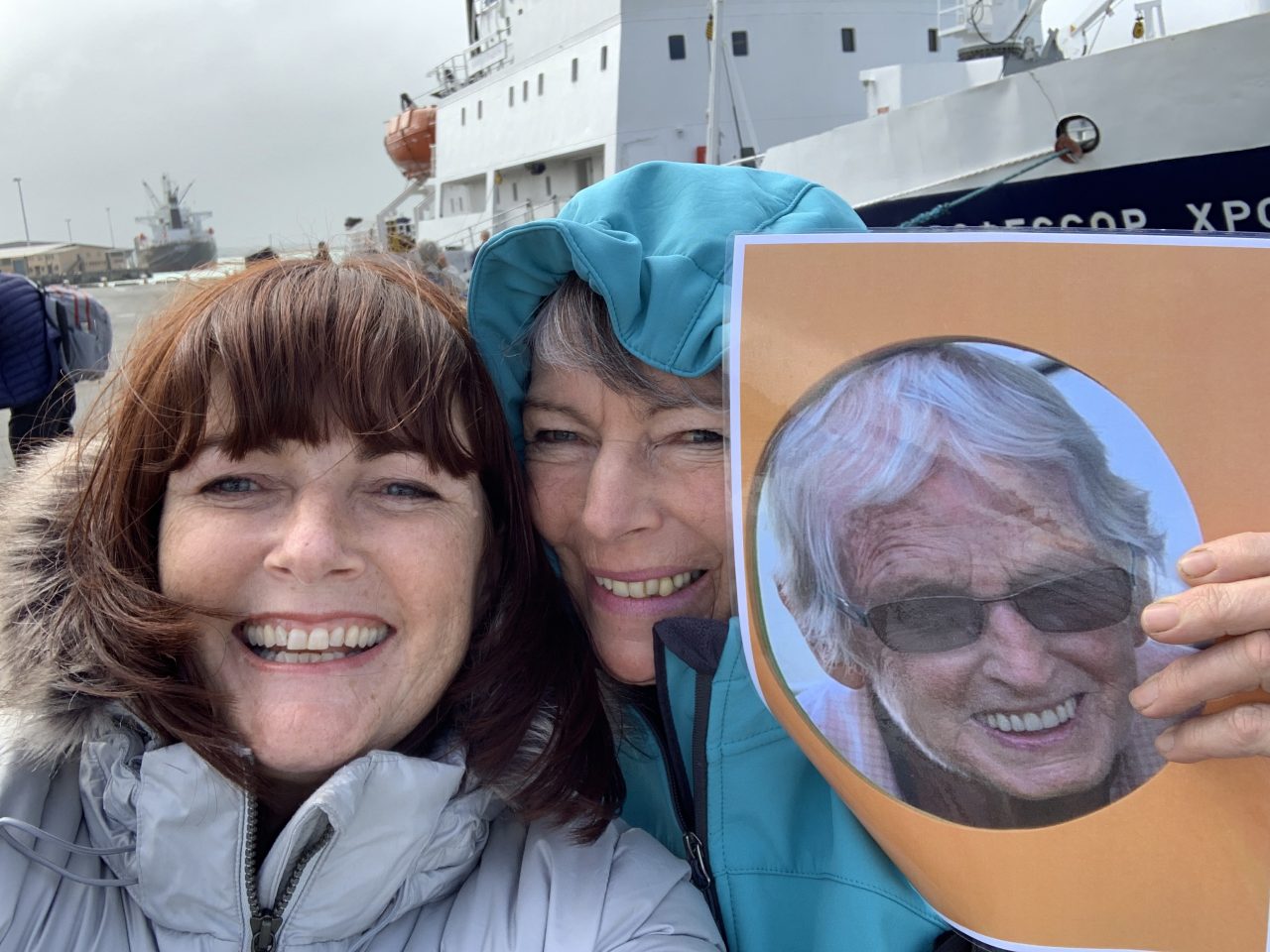
In and out of Bluff – Firstly to Snares Island, Auckland Islands, Campbell, Antipodes, and Bounty Islands, over two weeks of discovery and adventure all on our own back doorstep – incredible…. and it felt so exciting to dust off my passport for ID again.
Tucked up safe and sound in the recently refurbished Russian Icebreaker, ‘The Spirit of Enderby” expedition vessel with just 50 other Kiwi passengers and the most amazing crew, who not only were incredibly knowledgeable specialists on all things ‘subs’, they would give us short relevant lectures in the mornings on what we would see, then navigate the wild coastline driving the zodiacs, successfully dodging the mesmerising swirling golden kelp beds that loved to linger around the engine props and then they would take our drinks orders in the evening having stowed the zodiacs back on the ship… such accomplished friendly crew added a wonderful dimension to getting to know these islands of New Zealand that we all share ownership of and yet so few of us have been able to get there… until now.
We embarked on this adventure, my sister and I with one woman down on our usual trusty travelling trio; Mum, 85yrs young had planned to join us but ended up staying at home at the last minute… so we did what any good daughters would do and laminated her face and took her with us anyway! We had photos with ‘Mum’ on zodiacs, with penguins, on islands and even gave her a wee lie down when the seas were a bit rough… not quite the same as having her with us but the sentiment was there!… Even the crew were checking in on “How did Mum sleep last night?’ by the end.
Zodiacs were deployed for our first cruise along the spectacular coastline of deep blue sea and abundant birdlife; sea caves and kelp-beds; sea lions and pure black Snares Island Tomtits; Fur seals and penguins along with sightings of our first Buller’s Albatrosses.
The Penguin Slide was an unforgettable thrill with a close up view of the chaos and mayhem of hundreds of indecisive Snares Crested Penguins either sliding uncertainly down this natural geological slope – the only thing they seemed sure of was that nobody wanted to go first!… or marvel at the sight of penguins rafting up and torpedoing out of the sea onto the slippery slope on incoming waves, heading for their nest sites to reunite with their partners and chicks.
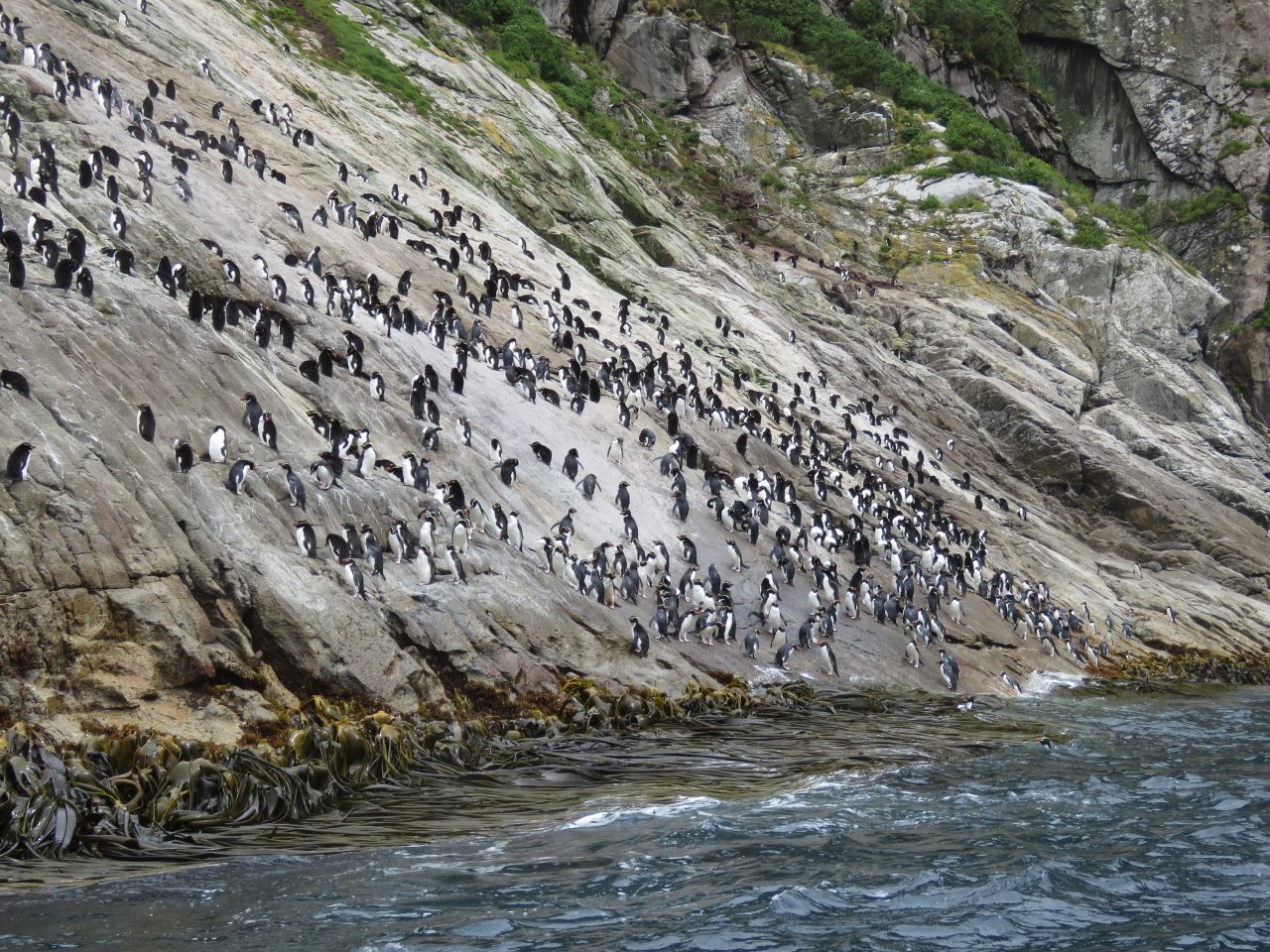
Enderby Island – Auckland Islands:
Enderby Island is the most northern island in the Auckland Island chain, and it came into view shortly after dawn for the first of our island landings. Just getting from the zodiacs to the tin shed where we left our big rubber muck boots was a little daunting with the beach full of colossal Hooker/NZ sea lions with no concept of good manners or social distancing hurrying us past them. Our lecturer earlier had forewarned us to just think of them as ‘inquisitive Labradors’, to stand still and take our backpacks off for them to sniff and all will be well…just don’t run…never run… you will never outrun a sea lion on land!
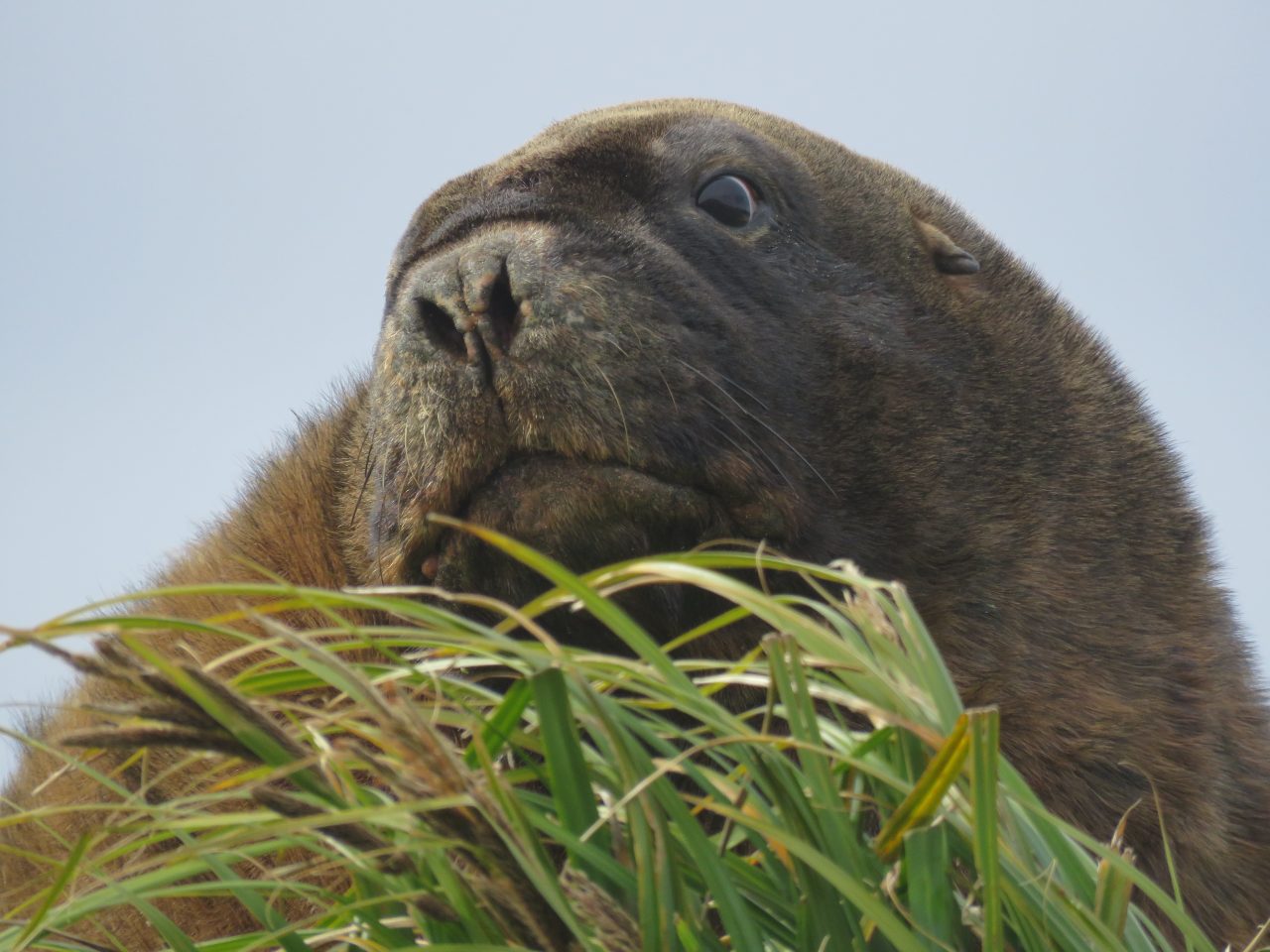
Ahead of us stretched the sweep of Sandy Bay with its large population of seals, Skuas, gulls and penguins all going about their own lives in and amongst each other.
Here on our 6 hour walk around the top of the island is where we first encountered ‘mega-herbs’ with their amazing over sized leaves/stems and flowers, a gorgeously fluffy baby skua chick with his desalinisation unit on top of his beak dripping the ‘extra to requirements’ salt off the tip. Nest building shags with mouths full of twigs, we stood in twisted Southern Rata forest and watched the shy Hoiho/Yellow eyed penguins on the cliff edges.
Coming back across the island to the bay where our home was anchored waiting for us, my sister Sue and I were lucky enough to have an amazing experience where a huge Southern Royal Albatross sat close to the boardwalk, we watched each other for quite some time and then he awkwardly stood, unfolded each of his 6ft long wings, and ran straight towards us as he valiantly tried to get his ‘big rig’ airborne… I had my camera clicking wildly but as I peered down the lens at that enormous bird looming closer and closer, running flat out, trying to get his huge body skyward I just had to duck, he was so close… we stood there in awe not quite able to believe we were so lucky to be in the perfect place at the perfect time on this wild and windy Southern Ocean island as we watched him sore into the sky he was born to rule.
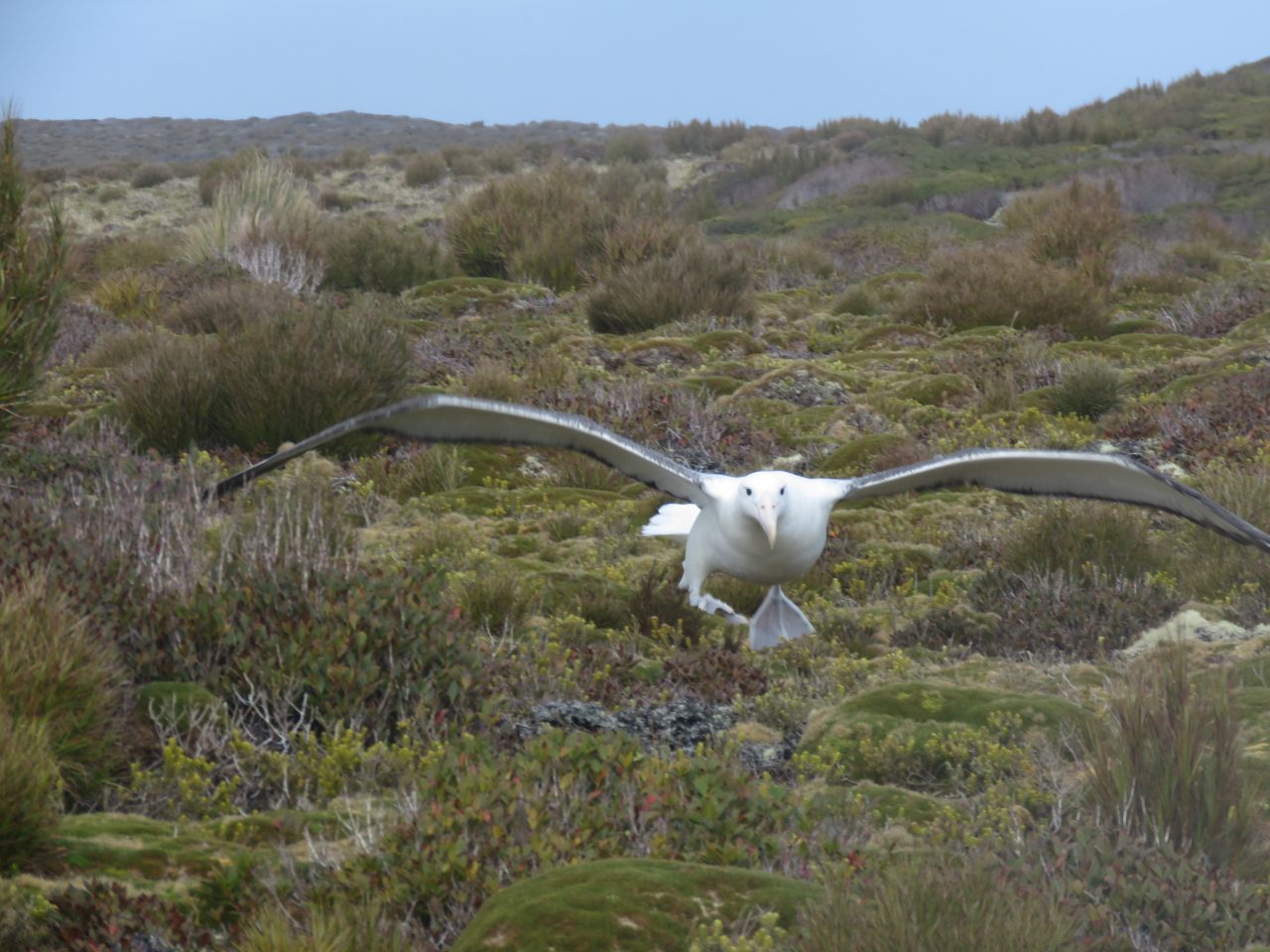
Having cruised down the Eastern side of the Auckland Islands we next set off in our zodiacs from our new anchorage in Port Ross to the shoreline at Hardwicke at the northern end of this island chain. I say ‘set off’ but with zodiac cruising in the Southern oceans there is a bit more to it than that. Firstly, we had to be suitably dress for exposed sea travel… Sue and I were getting better at getting our layers just right by now… firstly warm thermals, then fleecy warm trousers, then high necked jumpers before the waterproof pants, puffer and rainproof jackets… not to forget the knee-high waterproof muck boots for zodiac ‘wet landings’ on the shoreline… Then hats and our life jackets just in case… and hopefully we had remembered to pee before we started!
Then off out to the disinfection station to scrub our boots and over trousers again to be sure we didn’t transfer anything from island to island. We then joined the line along the side of the ship to await our turn for loading. Two hands free were needed for steadying ourselves as we carefully went down the steep and sometimes slippery gangway to the bottom and the waiting big Russian platform guy who told you to wait in no uncertain terms. As the zodiac rode the southern swells up to the platform and down in a mesmerising pattern you waited for instructions on when to grab the arm of the big Russian zodiac guy, who would expertly co-ordinate and pull you into the zodiac at the perfect time for you to scuttle quickly to a sitting position along the rubber sides of the boat, grateful to have made it one more time – ready for the adventure of the day to unfold.
A settlement was established at Hardwicke in 1849 and abandoned in 1852. Nutrient-poor soils, harsh climate and high rainfall made it hard to grow crops, and thick scrub made mustering livestock difficult. Whaling proved unproductive… the harshness of this land showed in the ages and detail on some of the graves of the intrepid souls that still lie here…
Janet Stove – aged 14 weeks – 10 October 1851.
John Mahony – master mariner – wrecked on this island – 1864 – died of starvation.
Jabez Oeters – died from exposure – 25 March 1907.
Babies only months old and sailors far from home lie under our care here on these remote islands.
Then into the north arm of Carnley Harbour we went, where shipwrecked on the 3rd January 1864 – the Grafton still lies. It was a 56-ton schooner that sailed from Sydney and eventually ended up wrecked on these wild shores, stranding 5 sailors here. They managed to build a hut and waited for a year for a ship to come to their rescue…to no avail. Together they built a forge and converted wreckage from the Grafton into a sailing dinghy. Three of the men then set off in an attempt to sail the 450km to Stewart Island. They succeeded, and then proceeded to raise funds for a rescue mission to pick up the two men left behind. The rescue was successful. Those remaining 2 men had survived for 18 months in total on this remote sub-Antarctic Island. It was amazing to see this history first-hand through the small section of wooden hull framing that continues to be eroded by the waves even now.
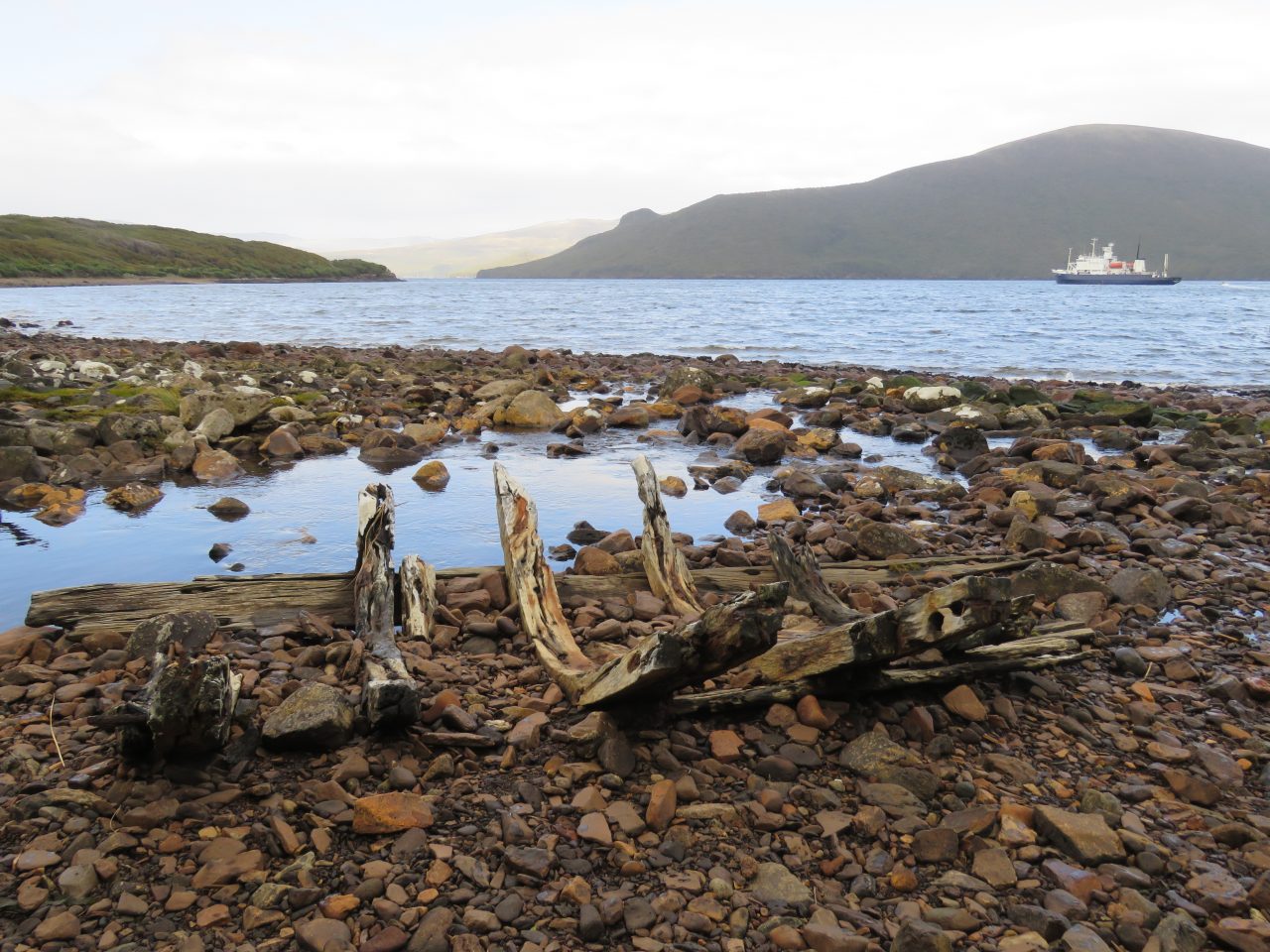
Eventually the shipwreck situation in the sub-Antarctic became so bad that for a time each island was checked twice a year by the Hinemoa from the NZ mainland, along with castaway depots set up to help keep lost souls alive until she could return.
We started our adventures here with a zodiac cruise around the cliffs near Bull Rock where thousands of Campbell, Grey-headed and light-mantled sooty Albatross and Cape Petrels breed and fill the skies. Campbell Island shags sit on their precariously positioned nests on what look like impossibly narrow lofty ledges.
Historical sites in Perseverance Harbour were explored with the onboard Historical expert Norm before following the boardwalk up through increasingly heavy rain to Col Lyall where megaherbs abound and Southern Royal albatross breed. I sat tucked up, sheltering behind a huge tussock being whipped around my head by the howling wind up there on that saddle. Just across from me sat a beautiful Royal Albatross on her nest… I sat there just admiring her pure beauty and resilience as she watched me back… then ever so slowly her eyelids began to droop and close, and eventually I was privileged enough to be allowed to stay while her head started to nod, and she dropped off to sleep oblivious to the howling gale buffeting her… and the kiwi chic mesmerised by her in the adjacent tussock… I’ll never forget what an honour it was to be accepted into her magnificent presence that day.
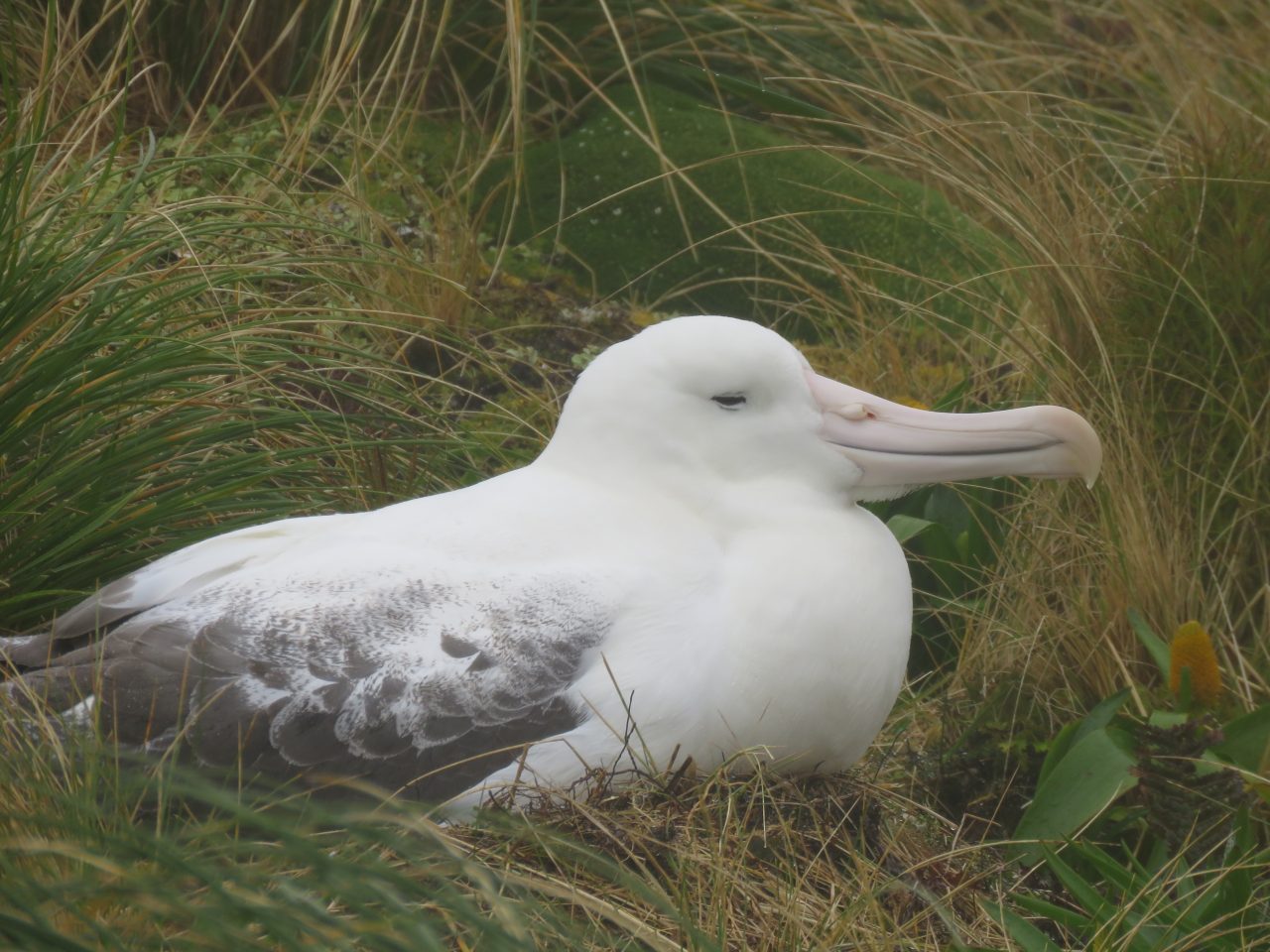
Antipodes Island:
Mist shrouded Antipodes Islands emerged from the sea fog, like some conjured up mythical land. The geology and landforms are astonishing with a coastline dominated by rocky reefs and towering columnar basalt cliffs.
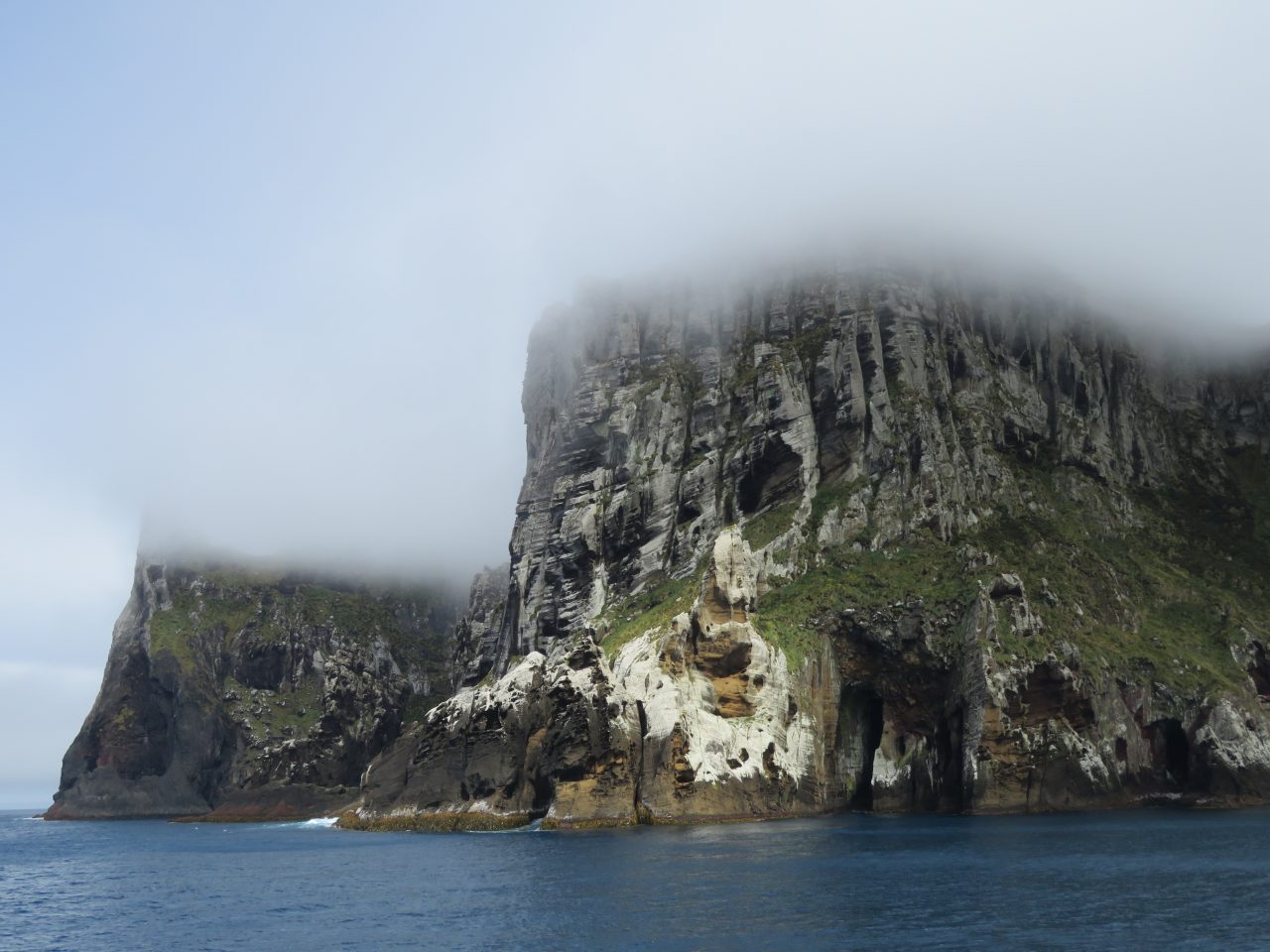
After having had robust discussions over breakfast that morning with others in the know regarding how there was ‘No Way’ they would do the ‘Polar Plunge’ if the opportunity arose due to the dense population of Great White Sharks in the waters below… I don’t mind admitting Sue and I did hesitate a little when the offer came just before lunch to jump off our safe haven into the blue/black waters below to join the Antipodean Swim Club… but just a little… then we donned our togs and headed for the gangway – giggling like schoolgirls all the way. The captain started with a beautiful swan dive from the top followed by about 8 other brave souls. Then it was our turn, jumping in took my breath away as I plunged down, then thankfully bobbed up to the surface again… funny but you don’t think of it before you jump but when you come up again… your back is to the ship and all you can see once the saltwater streams from your eyes … is just you and the endless, great Southern Ocean. The cold then griped me and so with a few quick breaststrokes in a tight circle I turned to check how far back to safety I needed to swim. I remember trying to calm my breath whilst telling myself I was fine as I watched the big rolling swell run down the side of the ship making it look like they were definitely leaving without me! … luckily it turned out I just needed a short swim to get back to the base of the gangway and up out of those shark infested chilly waters to safety again… where lunch awaited.
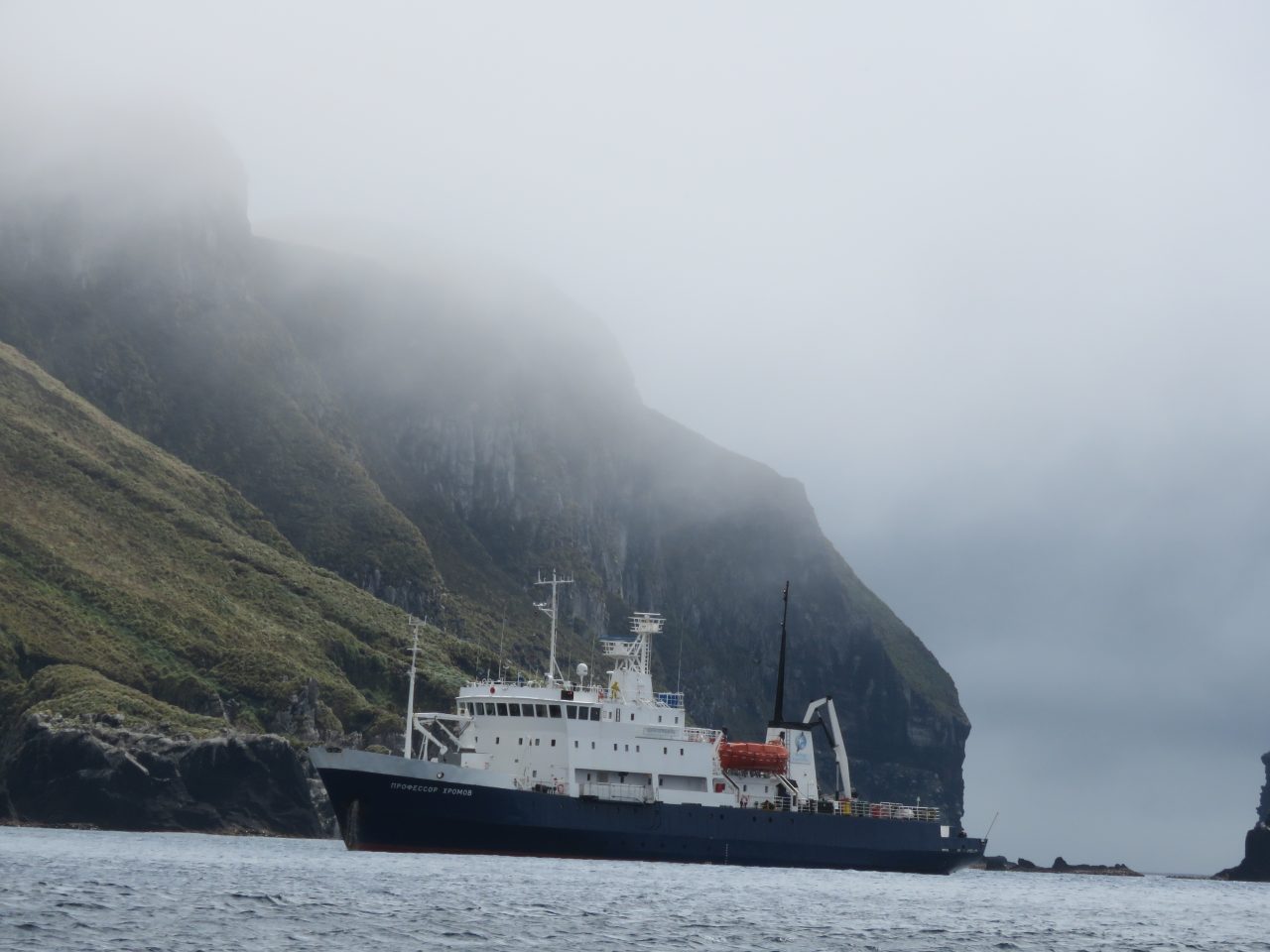
Bounty Island:
The Bounty Islands are the barest, bleakest, and most desolate of New Zealand’s outlying islands. Like the Snares, these islands are non-volcanic and consist entirely of basement biotite granite which dates from the early Jurassic period (180-190 million years ago) They were discovered and named by Captain William Bligh of the HMS Bounty in 1788.
The sheer concentration of seabirds here is mind-blowing. Thousands of Salvin’s Albatross fly in the congested airspace above these small, rocky islands that are devoid of even a blade of vegetation. An estimated 98.5% of the global population of Salvin’s Albatrosses breed here, along with Fulmar Prions, gulls, erect-crested and Rockhopper Penguins, Bounty Island Shags and New Zealand Fur seals. The intermingling of these species in such large numbers create a chaotic but breath-taking experience like no other. The abundance and exuberance of life here makes it hard to know where to look or what to focus on with so much happening simultaneously.
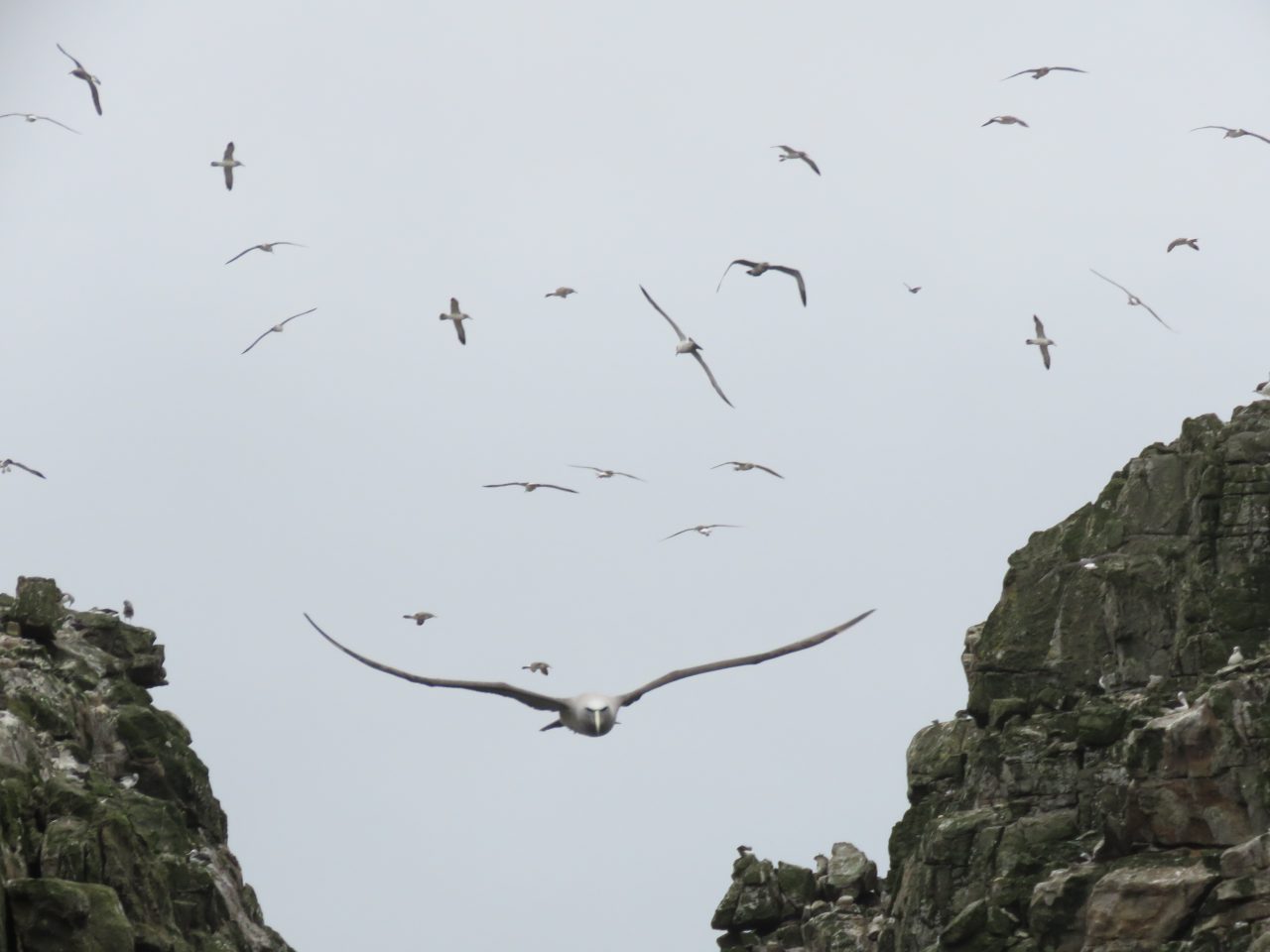
… and then all too soon it was the end of this incredible adventure and we headed for home, a 440 nautical-mile (820km) long journey back to Bluff… and Christmas… and the stories we will tell of the adventures we’ve had and the memories we’ve made of the hours we’ve spent, in these most absolutely incredible locations… these adventures will stay with me forever.
Thank you Tours Direct
Jenni
